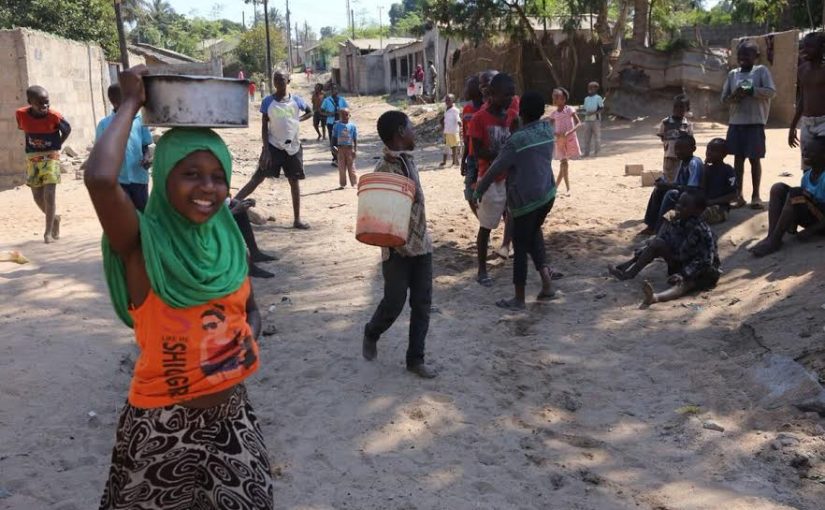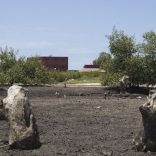Mozambique's forests under threat: Shifting agriculture and wildfires drive tree cover loss - Atlai
Resilience: All too familiar with disasters – By Levy Sérgio Mutemba

Courtesy from UN-Habitat in Mozambique
Mozambique, March 2000: 700 hundred people killed by the worst flood in Mozambique in 50 years. Just to be succeeded, a few days later, by 800 additional deaths caused by cyclone Eline. 2007: cyclone Flavio hits the country, displacing 33,000 Mozambicans. A year later only, cyclone Jokwe affects 200,000 people, leaving 55,000 completely homeless. Nine years later, the Mozambican Government officially states that cyclone Dineo killed seven persons and affected more than 548,000 people and 33,000 houses.
It is no wonder why resilience, or the ability of Mozambican settlements to withstand and to recover quickly from any plausible hazards, should increasingly weigh in the country’s development strategy and planning. “Resilience is a priority in Mozambique”, confirms Michel Matera, Senior Disaster Risk Management Specialist at the World Bank Global Practice for Social, Urban, Rural & Resilience. Who was one of the numerous experts attending the UN-Habitat’s Dialog about Urban Resilience in Mozambique (Dialogo sobre Resiliência em Moçambique), Thursday at the Radisson Blu Hotel, Maputo.
Indeed, the human and material damages caused by natural disasters here and around the world are intimately related to expansion of cities. In charge of the UN-Habitat Program in Mozambican, Joos Möhlmann reminds us that, globally, 80% of the largest cities are vulnerable to severe impacts from earthquakes, 60% are at risk from storm surges and tsunamis, and all face new impacts caused by climate change. While 50% of the world’s population already lives in cities, urban growth expectations are high. “In the case of Mozambique, it is worth noting that by 2050, the population will have doubled, reaching 60 million”, warns Joos Möhlmann during his introductory speech.
In order to increase the resilience of cities to the impacts of natural and human-made crises, the organization thus launched the City Resilience Profiling Program (CRPP) to support local governments to build their capacity to improve resilience by developing a comprehensive and integrated urban planning and management approach, as well as tools for measuring and profiling city resilience to all types of hazards.
This is why the UN-Habitat, in partnership with the World Bank, gathered some of the brightest international experts on resilience, central and local Government representatives, international non-profit organizations, global agencies and civil partners in the Mozambican capital. The objective is to stimulate a structured and creative dialog on urban resilience between different segments of society, each sharing their respective experiences.
After the main conference, the event was followed by various panel discussions focusing on local governance and inclusive approaches, urban planification, as well as investments in resilience. But, at the outset, ‘resilience’ lacks a common or joint-consensus about it really means. Coordinator for Central America and Caribbean of the Latin American Social Studies for Disasters Prevention Network (LA RED), professor Alan Lavell describes the hurdles when one tries to define resilience.
“Who’s using the term?” asks the academic, referring to the respective natural biases among experts from different fields. “Is it an engineer, a psychologist, a sociologist, an ecologist? Each has his or her own perspective about resilience.” In the special report Climate Change: New Dimensions in Disaster Risk, Exposure, Vulnerability, and Resilience, that Alan Lavell co-wrote a few years ago, he warns against older conceptions of resilience that are still applied today, namely resilience understood as merely ‘boucing back’ and ‘coping’.
These conceptual references “implicitly emphasized a return to a previous status quo or some other marginally acceptable level, such as ‘surviving,’ as opposed to generating a cyclical process that leads to continually improving conditions, as in ‘bouncing forward’ and/or eventually ‘thriving’.” Moreover, social-ecological systems focus more on process than outcomes, which includes “the ability to self-organize, learn and adapt over time”.
Today, adds Alan Lavell, the most updated and complete definitions of resilience also include notions of ‘anticipation’ and ‘improvement’ of vital structures and functions. “We must to develop a basic common definition of resilience upon which multi-disciplinary approaches will emerge”, finally insists Alan Lavell.
For its part, the UN-Habitat’s approach consists in taking into account risks and vulnerabilities due to more than one type of perils, adopting a “multi hazards approach”, contrary to most risk reduction models that focuses on a specific hazard. From this perspective, resilience is not only related to natural disasters but also to human-made ones such as armed conflicts and unsustainable or non-environmental-friendly industrialization.
In the Mozambican context, according to the United Nations Office for Disaster Risk Reduction (UNISDR), between 1990 and 2014, 45% of deaths were caused by disasters due to floods, followed by those due to drought (17%) and cyclones (10.4%). Between 2005 and 2012 alone, the combined economic loss caused by natural disasters in Mozambique amounted to more than USD 470 million.
“The country does not only display human vulnerabilities, but also those related to infrastructures and the economy in general”, explains Michel Matera, who has more than 15 years of disaster risk management (DRM) experience in Latin America and the Caribbean, as well as Africa and the Pacific. The World Bank’s expert goes on to say that in June, a dialog is also scheduled on the theme of fiscal resilience. “There is indeed the need to appreciate the extent to which public finances can or cannot absorb the impact of disasters”, specifies Michel Matera.
Finally, the other key word of the event was “coordination”. “We’re here to contribute in building human capacities in Mozambique, so that the country can eventually display a certain degree of autonomy in its ability to absorb the impacts of disasters and thus become more resilient”, insists Joos Möhlmann. The UN-Habitat chief in Mozambique also insists in the active role that local government representative can play, as they are the ones closest to the vulnerable populations.
By Levy Sergio Mutemba












Leave a Reply
Be the First to Comment!
You must be logged in to post a comment.
You must be logged in to post a comment.